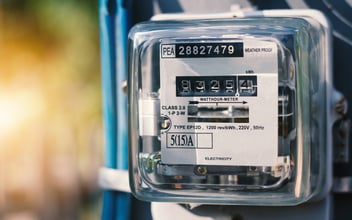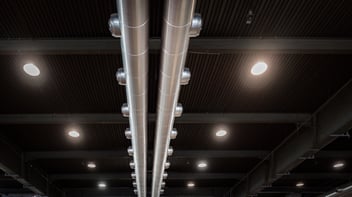

What are the Top 3 Benefits of Smart Lighting?
Smart lighting is not just about illumination. It's a sophisticated blend of smart technology and lighting design. It leverages the power of cellular IoT to offer unprecedented control and functionality.
The benefits of smart lighting extend beyond mere convenience. They touch upon critical aspects like energy efficiency, cost savings, and sustainability. Moreover, smart lighting plays a pivotal role in enhancing safety and security.
In this article, we delve into the top three benefits of smart lighting. We aim to shed light on how this technology can revolutionize your spaces, whether they are homes, workplaces, or entire cities. Join us as we illuminate the path to a brighter, smarter future.
What is Smart Lighting?
Smart lighting is a paradigm shift in the field of illumination. It transcends the traditional concept of lighting as a mere utility. Instead, it positions lighting as an integral part of our digital lives.
At its core, smart lighting is an intelligent system. It uses sensors and software to control the lighting in a space. This control can be manual or automated, based on various factors like occupancy or time of day.
The beauty of smart lighting lies in its adaptability. It can be customized to suit individual preferences, creating personalized lighting environments. Moreover, it can be integrated with other smart systems, enhancing the overall functionality of a space.
Cellular IoT: The Backbone of Smart Lighting Systems
Cellular IoT is a critical component of smart lighting systems. It enables the remote management and control of lighting, regardless of the geographical location.
The integration of cellular IoT in smart lighting offers several advantages. It allows for real-time monitoring of lighting systems, enabling quick detection and resolution of issues. This feature can significantly reduce downtime and maintenance costs.
Moreover, cellular IoT facilitates data collection from lighting systems. This data can provide valuable insights into usage patterns, helping to optimize energy consumption and enhance efficiency.
Here's a list of the top three benefits of smart lighting, demonstrating why it is one of the most important and essential electrical infrastructures in a city and a major catalyst for the rapid development of smart cities worldwide.
Benefit 1: Energy Efficiency and Cost Savings
One of the most significant benefits of smart lighting is its potential for energy efficiency. By optimizing the use of light based on occupancy and ambient conditions, smart lighting can significantly reduce energy consumption.
This reduction in energy consumption translates into substantial cost savings. Over time, the initial investment in smart lighting can be recouped through lower energy bills. Moreover, the longevity of LED bulbs used in smart lighting systems further contributes to cost savings.
The benefits of smart lighting extend beyond individual households or businesses. On a larger scale, the widespread adoption of smart lighting can contribute to reducing the strain on our power grids. This can lead to:
- Lower greenhouse gas emissions
- Reduced dependence on non-renewable energy sources
- Improved energy security
The Role of Smart Lighting in Sustainable Development
Smart lighting plays a crucial role in sustainable development. By reducing energy consumption, it contributes to the mitigation of climate change. This aligns with global efforts to transition towards low-carbon economies.
Moreover, smart lighting promotes the efficient use of resources. It reduces the need for frequent bulb replacements, minimizing waste. This is a step towards a more circular economy, where resources are used and reused for as long as possible.
Case Studies: Real-World Impact on Energy Consumption
Several case studies demonstrate the impact of smart lighting on energy consumption. For instance, the city of Los Angeles replaced its streetlights with LED bulbs and integrated them with a smart lighting system. This resulted in a 63% reduction in energy use. (Source: here)
In another example, Smart Street Lighting NY, powered by Interact City IoT lighting software, is a collaboration between NYPA and New York municipalities to convert street lights to connected LED, reducing energy usage and emissions while enabling smart city deployments. NYPA's innovative financing model supports municipalities in this transition, with over 50,000 LED street lights already installed, contributing to significant energy and cost savings. The program aims to convert 500,000 street lights by 2025. Connected street lighting, managed with Interact City, allows for the integration of sensors to monitor urban environments, enhancing city maintenance, governance, and quality of life. Key figures like Gil Quiniones, Abebe Woldemariam, and Kathy Sheehan highlight the benefits of this initiative, including operational efficiency, social justice, and equity improvements. (Source: here)
Benefit 2: Enhanced Safety and Security
Crime reduction is of great concern to everyone. By deploying smart street lighting systems, there is a measurable benefit for improved public safety. Street lights help create a network canopy, allowing more data to be utilised to improve public safety for smarter and more widespread public surveillance. Smart lighting also plays a pivotal role in enhancing safety and security. By providing adequate illumination, it can deter criminal activities and reduce accidents in public spaces.
Smart Lighting's Contribution to Public and Personal Security
In the public sphere, smart streetlights can be programmed to brighten when they detect movement. This can enhance the safety of pedestrians and drivers alike. In personal spaces, smart lighting can be integrated with security systems. For instance, lights can be programmed to switch on when a security alarm is triggered, potentially deterring intruders.
Moreover, smart lighting systems can send alerts to homeowners or security services if lights are switched on when the house is supposed to be empty. This proactive approach to security illustrates the potential of smart lighting in enhancing safety.
Benefit 3: Reduce Maintenance Costs
Smart lighting management systems not only contribute to reduced energy consumption but also play a crucial role in lowering maintenance costs. By providing real-time diagnostics and insights, these intelligent systems enable proactive maintenance, ensuring that lighting systems operate at their optimal efficiency levels.
This proactive approach to maintenance not only reduces the need for frequent repairs but also prolongs the lifespan of lighting fixtures. By addressing issues before they escalate, smart lighting management systems help in minimizing downtime and associated maintenance costs.
Moreover, the ability to monitor and control lighting systems remotely allows for efficient resource allocation and scheduling of maintenance tasks. This level of control and automation leads to cost savings and enhances the overall efficiency of lighting infrastructure, making it a valuable investment for cities and businesses alike.
Integrating Smart Lighting into Smart Cities and Homes
Smart lighting is not just limited to individual buildings or spaces. It is a crucial component of the larger smart cities and smart homes ecosystems. By integrating with other IoT devices and systems, smart lighting can contribute to a more connected, efficient, and sustainable urban environment.
In smart homes, smart lighting can be controlled remotely, scheduled to turn on or off at specific times, and even respond to voice commands. This level of control and convenience
is transforming the way we interact with our living spaces, making them more comfortable, efficient, and responsive to our needs.
The Future of Smart Lighting: Trends and Innovations
Looking ahead, the future of smart lighting is promising. With advancements in technology, we can expect to see more innovative features, greater integration with other systems, and even more benefits.
The integration of artificial intelligence and machine learning, for example, could enable smart lighting systems to learn from user behavior and adjust lighting conditions automatically. This is just one of the many exciting possibilities that the future of smart lighting holds.
As technology continues to evolve, the potential of smart lighting will only increase. By embracing these advancements, we can create more sustainable, efficient, and comfortable spaces, contributing to the development of smarter cities and homes. The future of lighting is undoubtedly smart, and the benefits are there for all to seize.
As a result, it is clear why smart LED lighting has emerged as one of the key role players in smart cities and IoT. Significant benefits become available to everyone from government and city planners, right down to the consumer and the proverbial 'man on the street'.
White Paper: The Future of Smart Cities and IoT
 By this point, we can all agree that connectivity is what makes a city smart. Cars, traffic lights, utility metering, smart housing and many more are interacting with each other to elevate our cities to their true potential.
By this point, we can all agree that connectivity is what makes a city smart. Cars, traffic lights, utility metering, smart housing and many more are interacting with each other to elevate our cities to their true potential.
We had a look at how exactly IoT is transforming smart cities and what lays in their connected future. Check our white paper to find out more about:
- IoT's role in smart city connectivity
- Smart city use cases
- NB-IoT
- IoT platforms for smart cities
- How Velos IoT can give smart cities an edge
Speak to a Velos IoT expert
Related articles


Smart HVAC: How IoT Transforms Smart HVAC Systems
Your traditional HVAC system is costing you money. To save energy costs and also improve your...

Smart Transportation Tackles Mobility
Smart transportation includes everything from traditional traffic management systems to smart...


